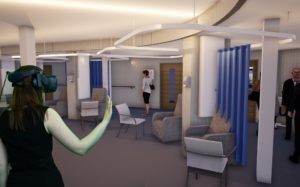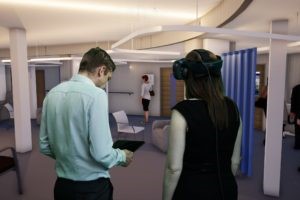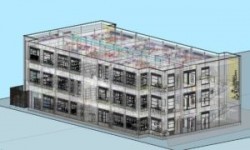David Clark, Manufacturing Director at offsite specialists The McAvoy Group, looks at the latest techniques for digitising construction and how the new technology is taking offsite to the next level.
BIM has been the subject of much debate in recent years but the aim of driving greater collaboration across the disciplines of architecture, engineering, manufacturing and construction has to be the right approach.
Digital transformation is happening all around us and the developing technologies – global connectivity, drones, digital scanning of buildings, satellite images, robotics and electric cars are set to accelerate and will continue to change the way we live.
Streamlining Design
Harnessing the latest technology has allowed us to streamline processes at the earliest stages of a project, to deliver shorter design periods and buildings that exceed our clients' expectations. It allows us to collaborate more effectively internally, with our supply chain and with the client.
Shorter design periods are critical for offsite. We need to start manufacturing buildings as soon as the ground is broken. To achieve that, detailed design information has to be released to manufacturing at a much earlier stage than with site-based construction – and that necessitates earlier decision making.

BIM allows better client engagement with the use of 3D models – teachers or healthcare professionals for example, are not trained to read 2D construction drawings. If we use data rich, fully detailed 3D BIM models and walkthroughs, we can communicate design details much more effectively. And the client benefits from better internal communications about their new facilities.
Virtual Reality in Construction
Advances in VR have allowed us to put our clients and end users into their virtual building as part of the design process. They can feel and experience their working environments and are now able to validate instantly whether the layouts work for them.
VR takes client engagement to another level and works alongside BIM. It is another way to communicate with stakeholders, allowing them to engage with and review the design as it develops. It also removes the potential for misinterpretation of drawings and data loss.
Using a headset, you can be in the space in a building. Our customers simply love this. We used it for a major project at Dublin Airport where the client wanted to assess ceiling heights. It provided instant and more informed decision making.
We can set up mobile VR at a client's office to demonstrate a design to stakeholders. Remote multi-user sessions can be created, linked to our design office for remote design workshops and allowing stakeholders to tour the building. Permanent VR can be installed on site for major projects, hosted at our head office. This all enhances the way our clients visualise a building. The design and its functionality can be assessed to produce even better building designs, more quickly.
A client at an NHS trust recently commented: "Having a virtual reality model of our proposed new facilities was invaluable. It allowed us to demonstrate the clinical environment to our staff and stakeholders, equipping them with all the information they needed while the project was under construction on this fully operational hospital site. As a trust, we are committed to utilising the latest digital technology and will aim to use VR on future development projects wherever possible, following its success on the scheme with McAvoy."

VR in Manufacturing
We are now looking at building a VR experience for training our production teams in the most efficient and safest processes.
Offsite manufacture has many repeatable operations. We can now take the highest risk activity – such as moving large modules – and build a VR programme around that process to help us continually improve health and safety.
Augmented Reality – The Next Development
AR allows us to project data onto the world around us. We could take AR onto a site and superimpose the building. This provides an excellent planning tool and a new level of client engagement.
We are exploring how AR could allow us to deliver 3D data to manufacturing, potentially cutting out the resource-intensive processes of 2D information. This has huge potential for offsite. By removing the reliance on manual processes, there is less data loss and more informed decision making.
We are now working with the Manufacturing Technology Centre on an advanced visualisation project to use AR in construction. This aims to develop construction-related engineering skills to address the needs of digital construction.
Embedding Innovation for Growth
We are embedding innovation across the business to help achieve our ambitious plans for growth. The digital transformation will be applied to the manufacturing process – such as using robotics and new materials – to further enhance the efficiency and quality of offsite construction solutions. Other new technologies we have adopted include:
• A cloud-based information management solution has been implemented for sharing, controlling and collaborating on project information with dispersed teams.
As a business, we see tremendous opportunities for digitising offsite construction. We were the first offsite specialist to achieve BIM Level 2 accreditation and our award-winning approach has transformed the way we work with our clients.
As advances in digital technology continue to evolve, we can only see even greater benefits to our customers and stakeholders in the facilities we design and construct offsite.









